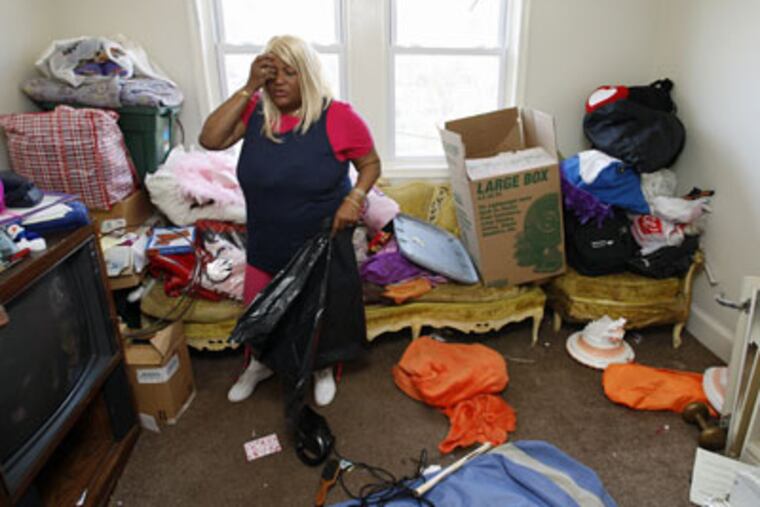As moratoriums expire, home ejectments climb
Even as Philadelphia's cutting-edge efforts to stem foreclosures are being widely copied, the number of ejectments and evictions that result from foreclosures seems to be growing here, the city Sheriff's Office said yesterday.

Even as Philadelphia's cutting-edge efforts to stem foreclosures are being widely copied, the number of ejectments and evictions that result from foreclosures seems to be growing here, the city Sheriff's Office said yesterday.
Ejectments - in which homeowners are ordered to vacate properties sold at sheriff's sale - more than doubled, from 47 in January to 107 in April, spokeswoman Wanda D. Davis said.
And in the first 11 days of June alone, there were 49, she said, adding, "Ejectments have backed up."
No data were available on evictions of tenants from foreclosed rental properties, although these, too, appear to be increasing, Davis said. Evictions are handled by officers of the Municipal Landlord Tenant Court, rather than by the Sheriff's Office.
The bump in ejectments was attributed to the end of several lenders' foreclosure moratoriums after release of the details of President Obama's Making Home Affordable program. That plan - designed to allow struggling borrowers either to refinance their mortgages or to have the terms of their loans modified - targets about nine million homeowners nationwide.
The Sheriff's Office placed a moratorium of its own on foreclosure sales between April and October of last year, while the city's mortgage-foreclosure diversion program, designed to bring lenders and borrowers together under court supervision, was being put in place.
Part of the increase in ejectments this year could result from those older foreclosures being "back on schedule," said Ian Phillips, legislative director of ACORN, which is involved in the diversion program.
Sheriff's sales of foreclosed properties usually occur five or six months after the Court of Common Pleas approves a judgment against a borrower, Phillips said. Ejectment typically takes place two to three months after the sheriff's sale, during which time the house is paid for and the deed recorded.
"This really is just an educated guess at what is going on here," Phillips said, "though the number [of ejectments] is small considering that every week 200 to 300" lender-borrower conferences take place in the City Hall courtroom of Common Pleas Judge Annette Rizzo.
"I'd be curious to see the overall trend, and if it matches this theory," he said.
Because the number of ejectments here pales in comparison to the level in cities in foreclosure-ravaged areas of the West and Florida, yesterday's Sheriff's Office news conference also addressed what homeowners facing ejectment should expect.
Jim Lee, of the sheriff's civil-enforcement unit, said that when the office receives a court order to eject a homeowner, "we keep trying to make personal contact and let them know they have 21 days to vacate."
On the day of the ejectment, sheriff's officers arrive with a moving van paid for by the purchaser of the property, who also must prepay 30 days at a storage facility for the occupants' possessions.
"We don't put out the occupants' stuff on the street," Lee said.